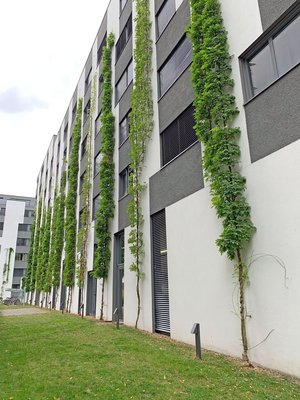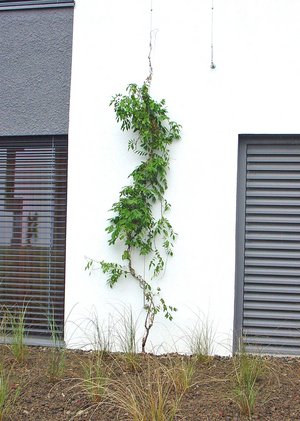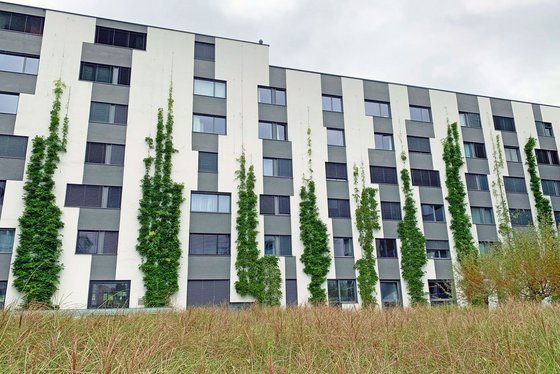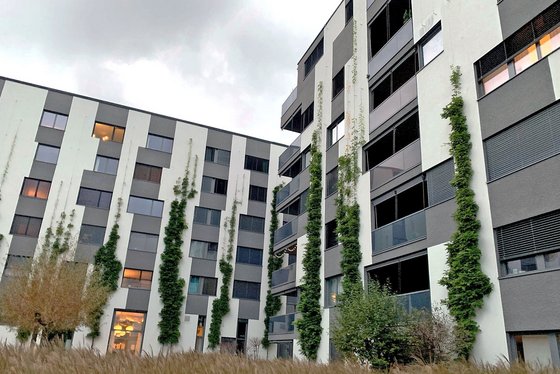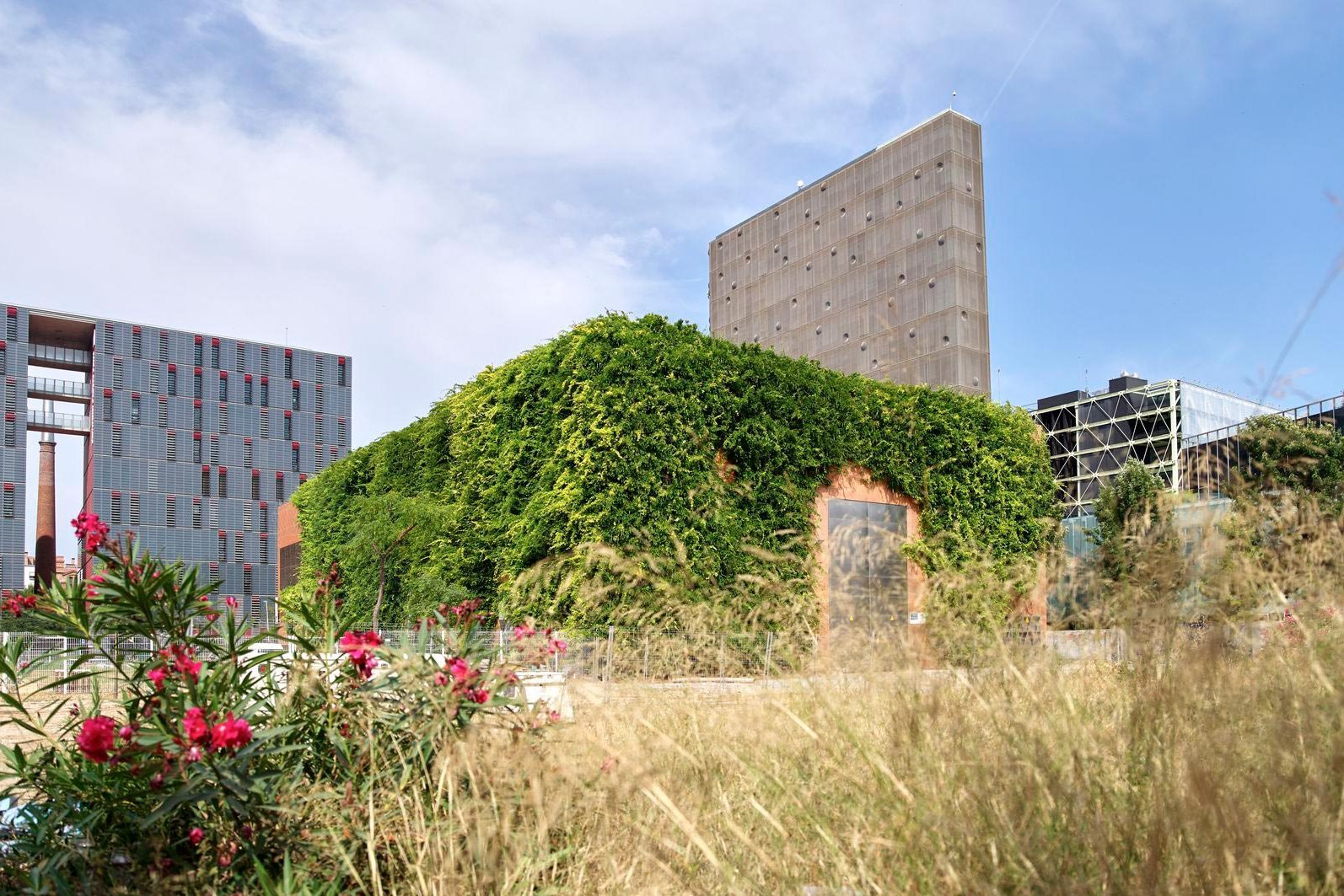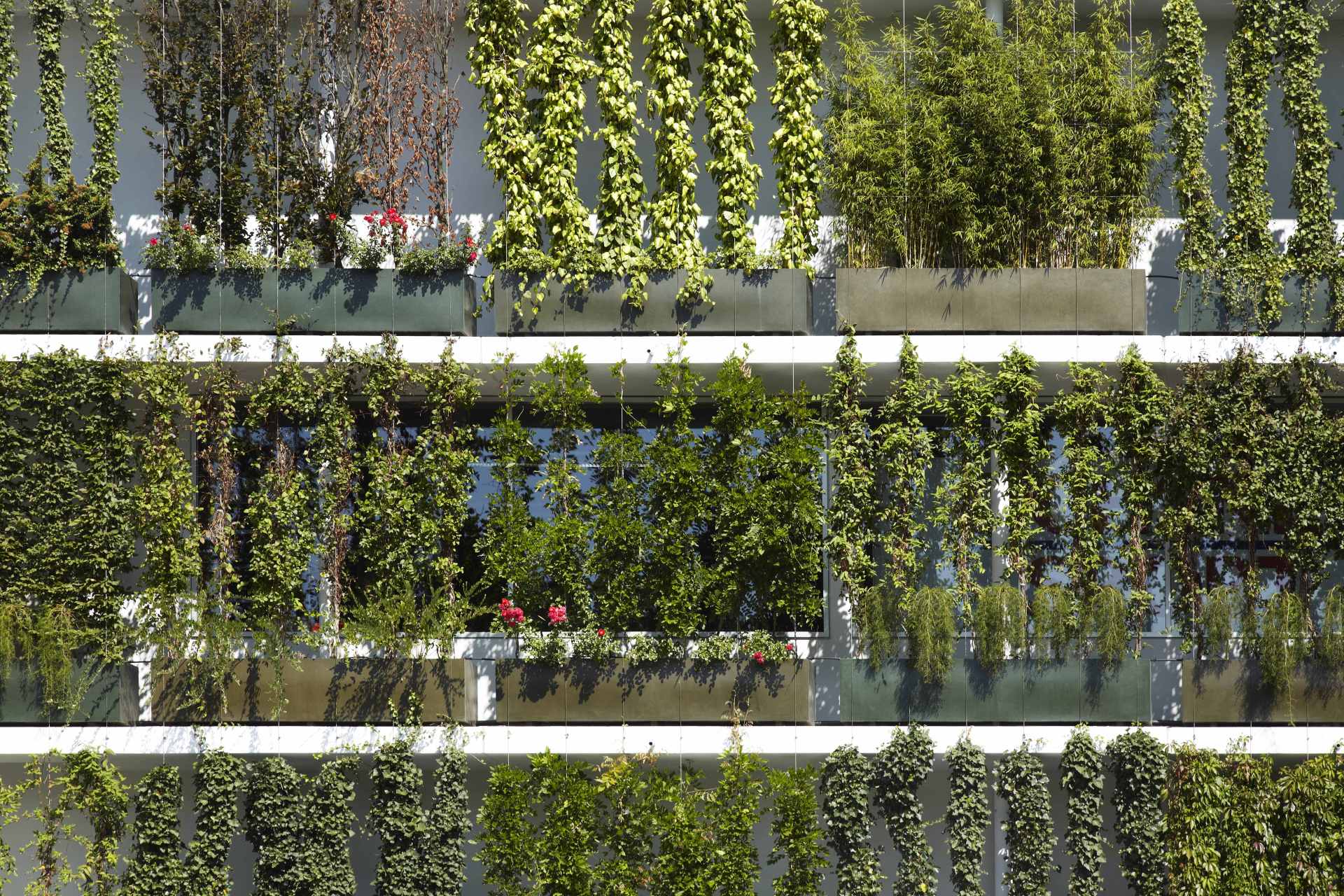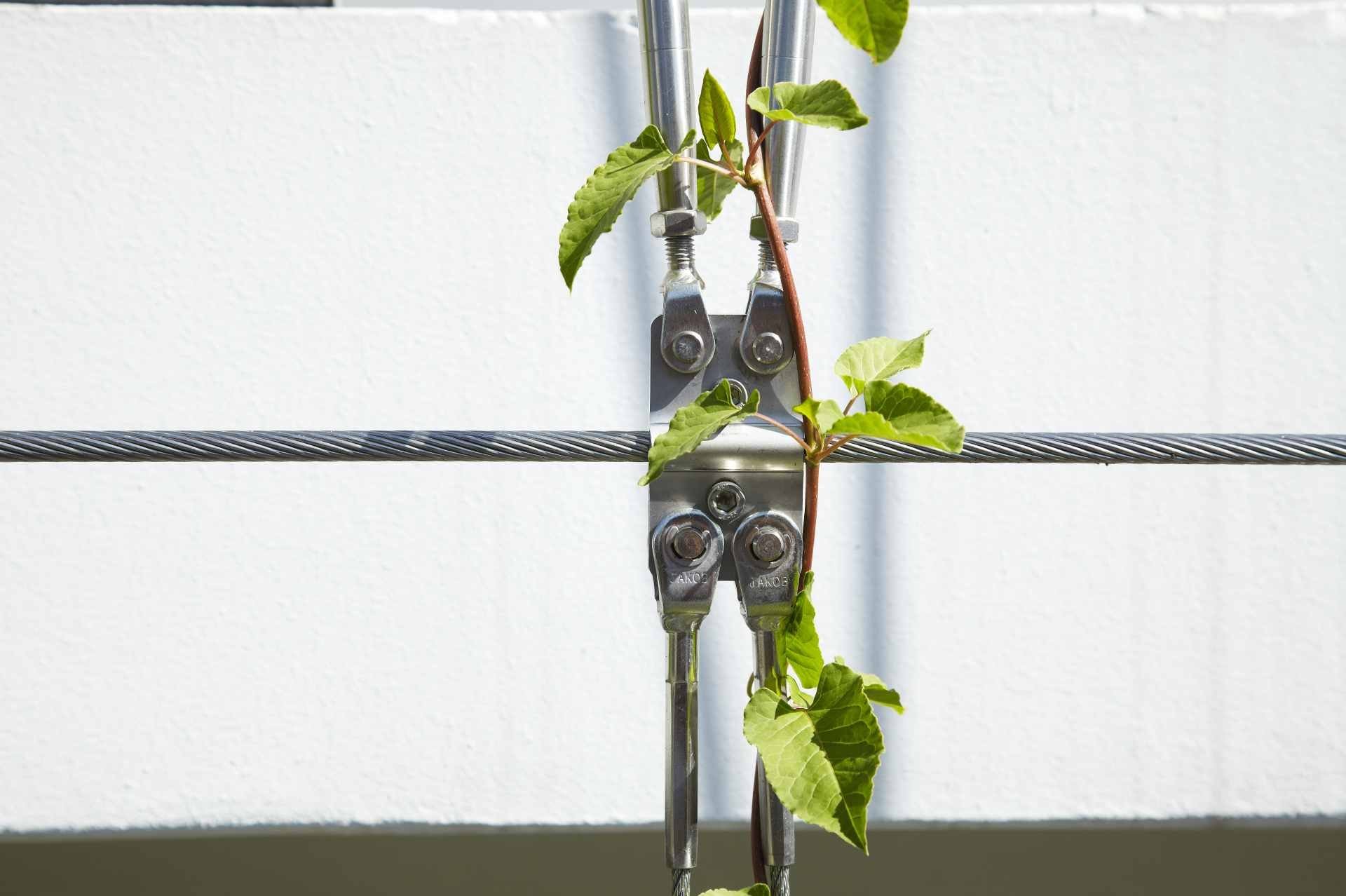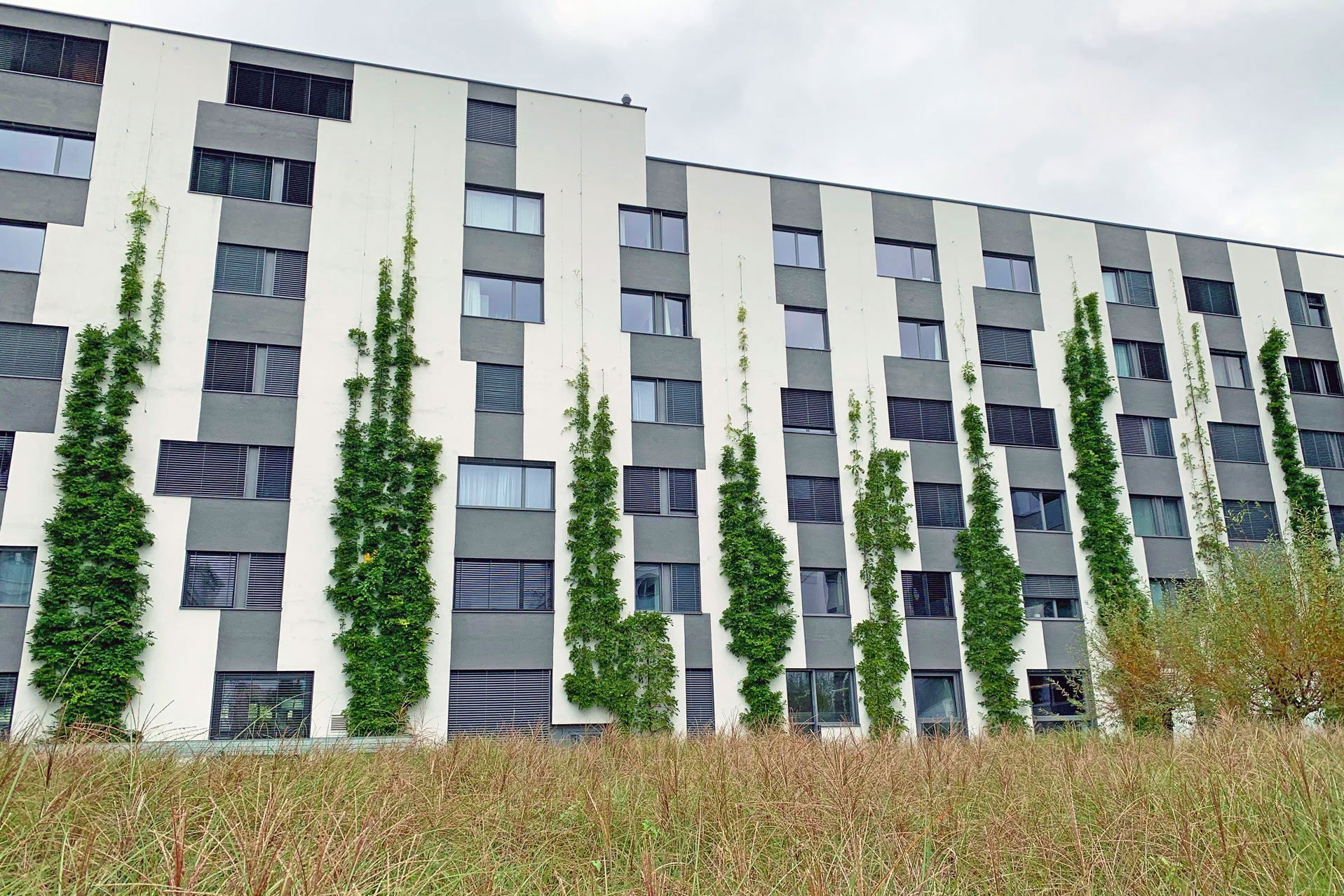
4 points for successful greening
For the greening of facades, Jakob Rope Systems implemented a ground-based vine structure in Glattpark (Opfikon). Today, after ten years of growth, the greenery unfolds an impressive splendor. We draw a conclusion and give important tips.
When the “Chavez Verde” residential development was built in 2011 in the Glattpark district near Zurich (Opfikon), selective greenery was planted on the facades of the buildings. Today, ten years later, the white surfaces of the facades are covered with wisteria plants almost 20 metres high. The vertically planted areas characterize the inner courtyard of the housing estate and give the facades an accentuated play of green tones that changes with the seasons.
The completed project in Glattpark shows what facade greening can achieve over a period of ten years: namely growth of up to 2 metres in height per year and a long service life. Assuming that the facade construction, integrated climbing structures and landscape gardeners create the ideal conditions. Using the example of the greening in Glattpark, we summarize here a few selected points to consider.
1. Ground-bound growth: The principle of ground-bound growth applied in Glattpark provides the starting point for the discreet greenery, which can grow upwards via vertical tendril ropes. In contrast to wall-bound systems, this form of greening is inexpensive to purchase and maintain and does not require an overly elaborate water and nutrient supply. Minimal use of materials and maintenance costs deliver high benefits and a long service life.
Another advantage of the Glattpark project is that the growth direction of the plants is concentrated on individual tendril ropes. This increases the speed of vertical growth and simplifies the care and pruning of the plants throughout their lifetime.
2. High-quality stainless steel trellis structure: In Glattpark, the planners opted for single-strand trellis structures to create selective accents of greenery. This allows the wisteria to grow upwards from the ground on 4 millimetre thick stainless steel ropes in the 6 x 7 + WC version.
The natural way of greening starting from the ground was discreetly integrated into the facade using Jakob systems. For this purpose, support shoes were attached to the masonry underneath the facade, on which the spacers and stainless steel ropes are fixed. All elements are made of high-quality stainless steel. This makes the climbing structures resistant to weathering and corrosion. Over the entire life of the plants, the growth-bearing structure therefore remains virtually maintenance-free and offers maximum stability. This gives the plants peace of mind and an optimal basis for undisturbed growth.
The young shoots, which are still very flexible at the beginning, quickly develop into strong branches within a few years, which would crush or collapse climbing structures made of wood or other natural fibres. A stainless steel system anchored in the wall therefore proves to be a stable climbing aid on house walls.
3. Care and pruning: Important conditions for later growth are already created when the young plants are planted. A sufficiently large root pit filled with humus or another nutrient-rich soil creates an optimal basis. Depending on the type of plant and its location, landscape gardeners then recommend pruning in spring and, if necessary, another pruning before winter. Throughout the year, adequate watering and nutrient supply ensures healthy plant growth.
With increasing growth, it is advisable to check at regular intervals the tensile forces with which growing plants act on the supporting tendril structure. Certain plant species (including wisteria) tend to twist the rope structure, which can cause higher tensile forces compared to growth parallel to the rope. In this case, pruning the plants provides the necessary correction.
4. Weather and climate conditions: The location and orientation of the greenery have a particular influence on the growth of the plants and on their lifespan. Landscapers therefore select plants taking into account the weather and climate conditions prevailing at the site. The light and shade conditions are also taken into account. Likewise, the wind and snow loads that occur.
For the greenery in Glattpark, the gardeners opted for wisteria. This plant species is heat-loving and prefers sunny locations. But even semi-shady periods of the day do not harm the plant. During the cold months, the plant can tolerate sub-zero temperatures in a sunny location. Due to its strong branches, wind and snow loads are not problematic for the plant.
In the right location, wisteria rewards with fragrant clusters of flowers between mid-April and June. And with a bit of luck, the plants will bloom a second time a year.
Today, the "Chavez Verde" development in Glattpark impresses with its overall architectural effect, into which greenery elements have been sensibly incorporated. The integration of the discreet facade greening now unfolds its full effect and enriches the housing estate with vertical green spaces. From today's perspective, the choice of a ground-based and discreetly anchored vine structure has proved successful.
Downloads
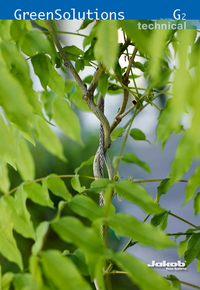
The program is presented in two parts. The catalog GreenSolutions Technical contains all wire rope products with their technical information for your greening project.
Download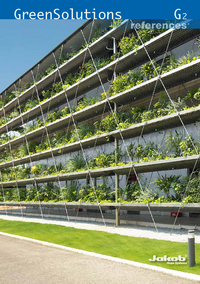
The program is presented in two parts. In the GreenSolutions reference brochure, you will find many real-world applications that show you the potential of greening.
Download